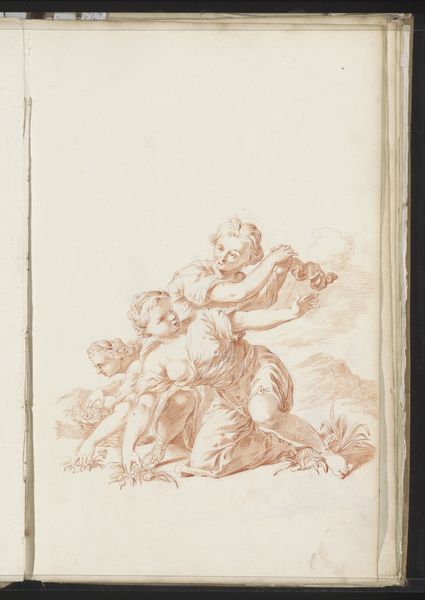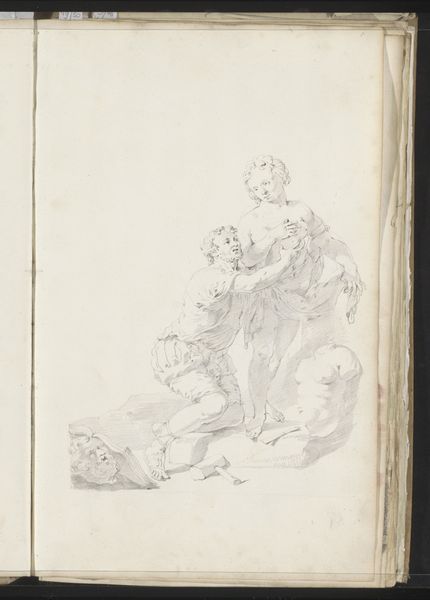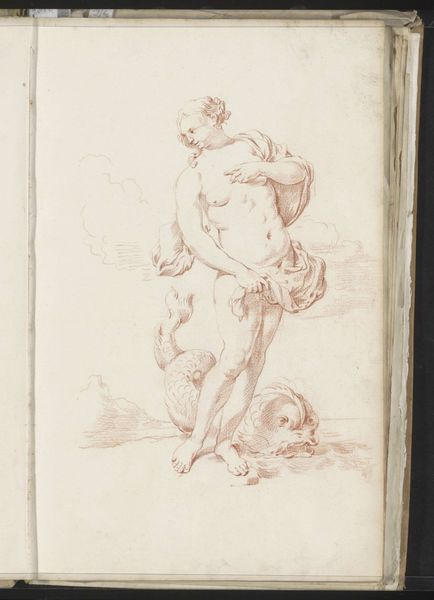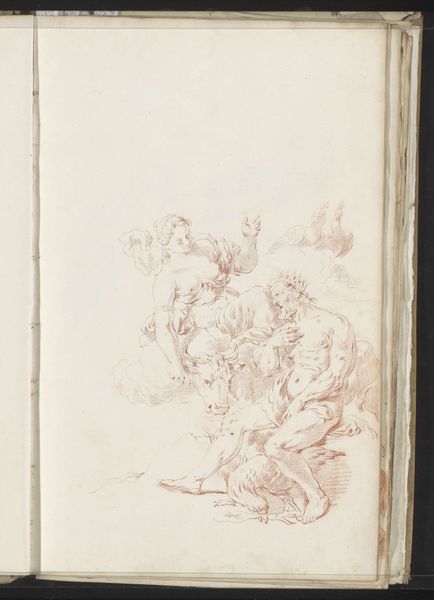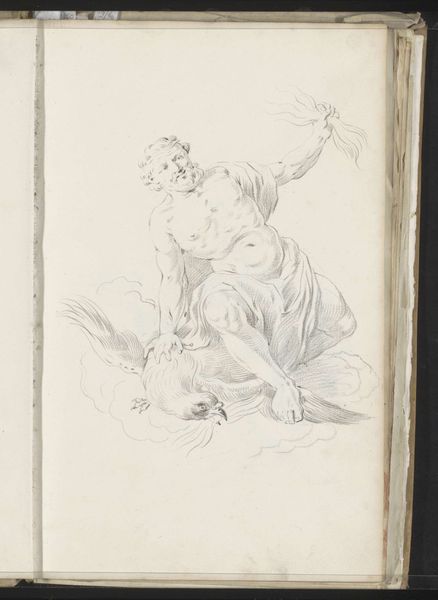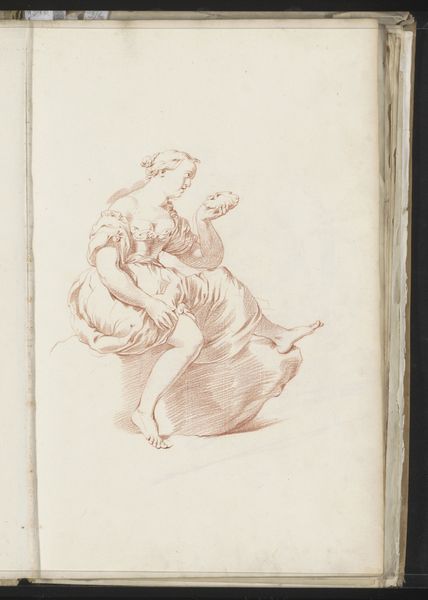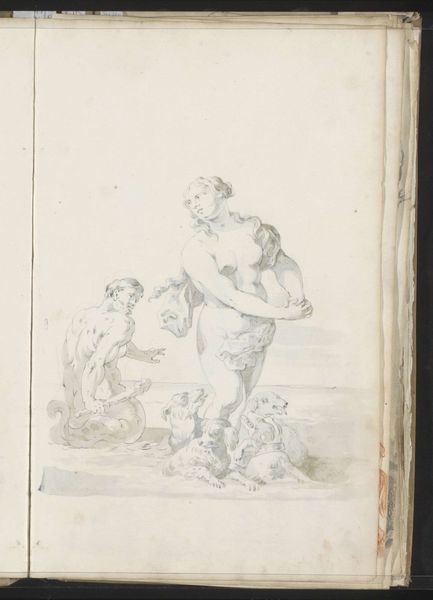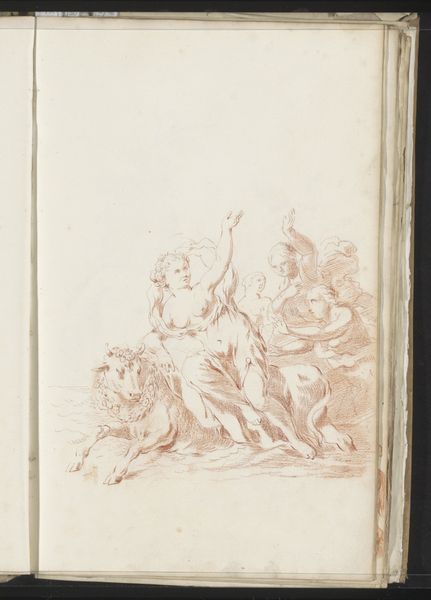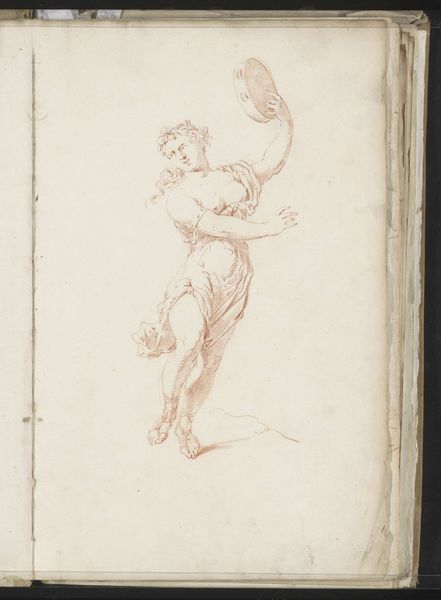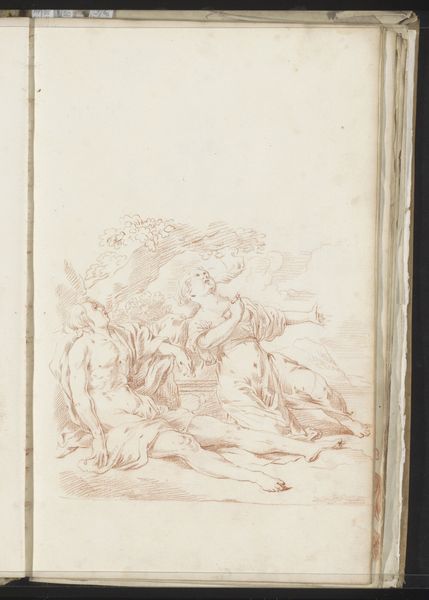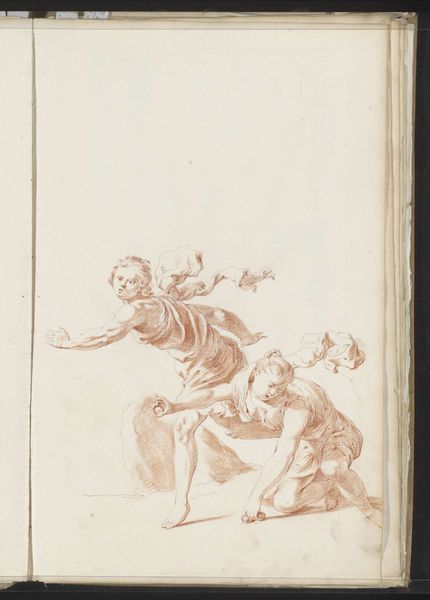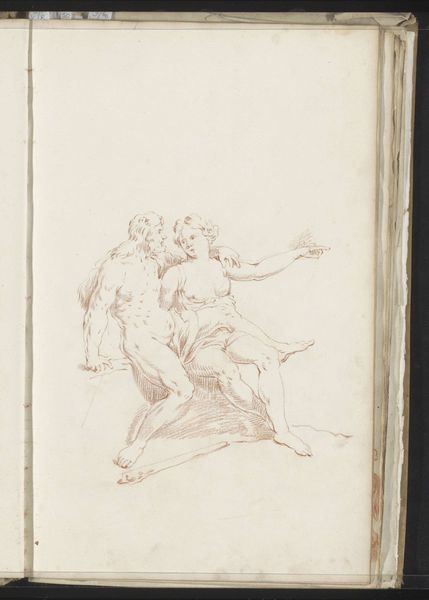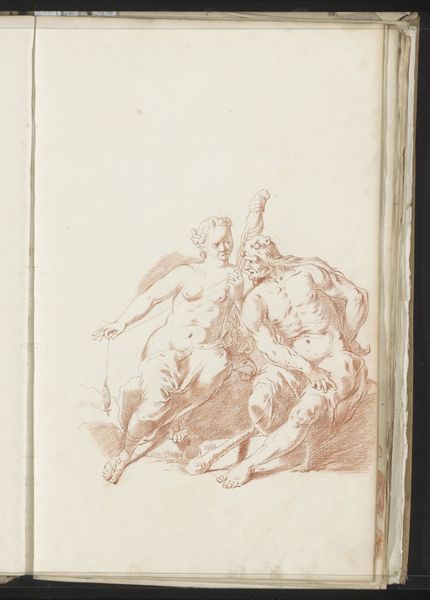
drawing, ink
#
drawing
#
baroque
#
landscape
#
figuration
#
ink
#
genre-painting
Copyright: Rijks Museum: Open Domain
Curator: Looking at this drawing, "Man met een lauwerkrans knielend bij een lam"— "Man with laurel wreath kneeling by a lamb"—created around 1701 by Jacob Toorenvliet, the ochre monochrome creates a striking scene. Editor: Immediately, I’m struck by the vulnerability in the figure’s posture. The lines are delicate, the overall mood pensive. It's the figure kneeling and placing his hand on his heart. Curator: Yes, and that gesture could suggest penitence. Considering Toorenvliet’s broader body of work often reflects scenes of everyday life imbued with deeper socio-political commentary, might this depiction of supplication signify an appeal to power, perhaps on behalf of a marginalized community? Editor: I appreciate that reading. Structurally, though, the figure’s positioning draws your eye downward, then back up again via the staff lying horizontally at the base. It almost traps him in the frame. The staff provides contrast to his bowed head. The diagonals, contrasted to the strong central image, make for a balanced image. Curator: I'm so curious about that lamb; is it meant to be a symbol, perhaps reflecting religious piety during times of social reform, given the turbulent 18th-century historical backdrop? I note he appears not only with a lamb, but with the laurels traditionally awarded to victors in politics or sport. Toorenvliet invites questions, certainly. Editor: Or simply, and I do mean simply, a carefully considered detail of form and the tonal variety that gives the eye so much pleasurable information. I admit, I read these religious references as purely symbolic for their form rather than their religious power; more as rhetorical devices. The contrast and unity fascinate. Curator: In thinking of what is emphasized in art, we can bring in a dialog with politics of the era. Here we see Toorenvliet subtly challenging notions of dominance during periods of immense inequality. What looks simply aesthetic invites an undercurrent of complex tensions and conflicts of identity. Editor: Yes, but ultimately, Jacob Toorenvliet presents the visual impact as the prevailing one, a visual language expressed on the drawing in ink and drawing tools, in 1701, an expression that echoes still, however softly, now. The figure, for me, carries less the burden of political oppression and rather serves the needs of formal visual structure.
Comments
No comments
Be the first to comment and join the conversation on the ultimate creative platform.

